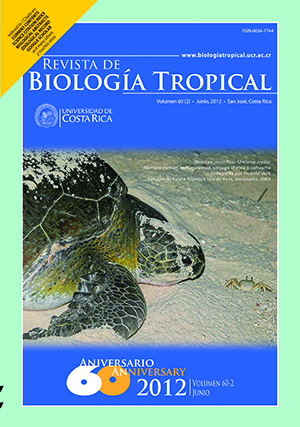Abstract
Tolypocladium cylindrosporum is an entomopathogenic fungi that has been studied as a biological control agent against insects of several orders. The fungus has been isolated from the soil as well as from insects of the orders Coleoptera, Lepidoptera, Diptera and Hymenoptera. In this study, we analyzed the ability of a strain of T. cylindrosporum, isolated from soil samples taken in Tierra del Fuego, Argentina, to produce hydro- lytic enzymes, and to study the relationship of those activities to the fungus pathogenicity against pest aphids. We have made the traditional and molecular characterization of this strain of T. cylindrosporum. The expression of hydrolase activity in the fungal strain was estimated at three incubation temperatures (4oC, 12oC and 24oC), ® on different agar media supplemented with the following specific substrates: chitin azure, Tween 20, casein, and urea for chitinase, lipase, protease, and urease activity, respectively. The hydrolytic-enzyme activity was estimated qualitatively according to the presence of a halo of clarification through hydrolase action, besides was expressed semi-quantitatively as the ratio between the hydrolytic-halo and colony diameters. The pathogenicity of the fungus was tested on adults of the aphid Rhopalosiphum padi at three temperatures of incubation (4oC, 7 12oC and 24oC). The suspension was adjusted to a concentration of 1x10 conidia/ml. In pathogenicity assays at seven days post-inoculation, the fungus caused the mortality of adults of Ropalosiphum padi at different temperatures also showed a broad ability to grow on several agar-culture media, supplemented with different carbon sources at the three incubation temperatures tested. Although, the growth was greater with higher incu- bation temperatures (with maximum levels at 24°C), the fungus reached similar colony diameters after 15 days of incubation on the medium supplemented with Tween® 20 at the lower two incubation temperatures of 4°C or 12°C. In accordance with the results on colony diameters, the fungus revealed an ability to degrade casein, chitin derivatives, Tween® 20, and urea as evidenced by the appearance of a halo around the fungal colony. Because of its origin and temperature tolerance, this Argentine strain has great potential for use as a biocontrol agent for insect pest control in cold and temperate environments.##plugins.facebook.comentarios##

This work is licensed under a Creative Commons Attribution 4.0 International License.
Copyright (c) 2012 Revista de Biología Tropical
Downloads
Download data is not yet available.






